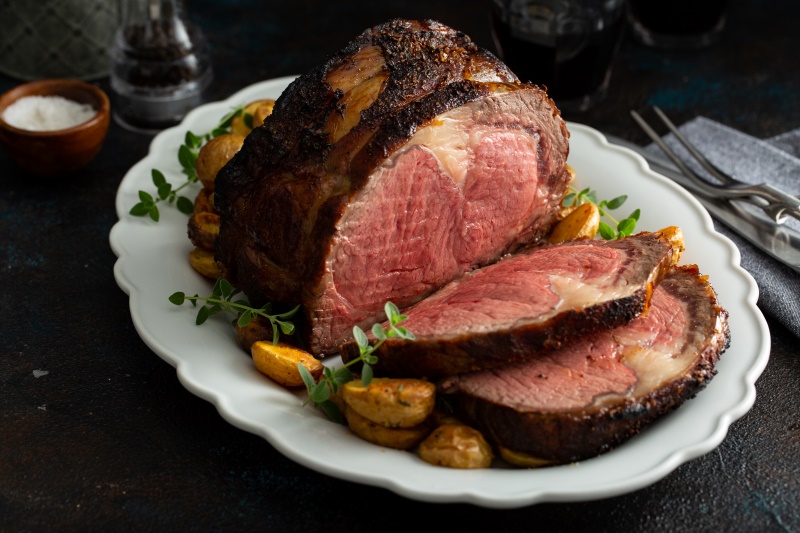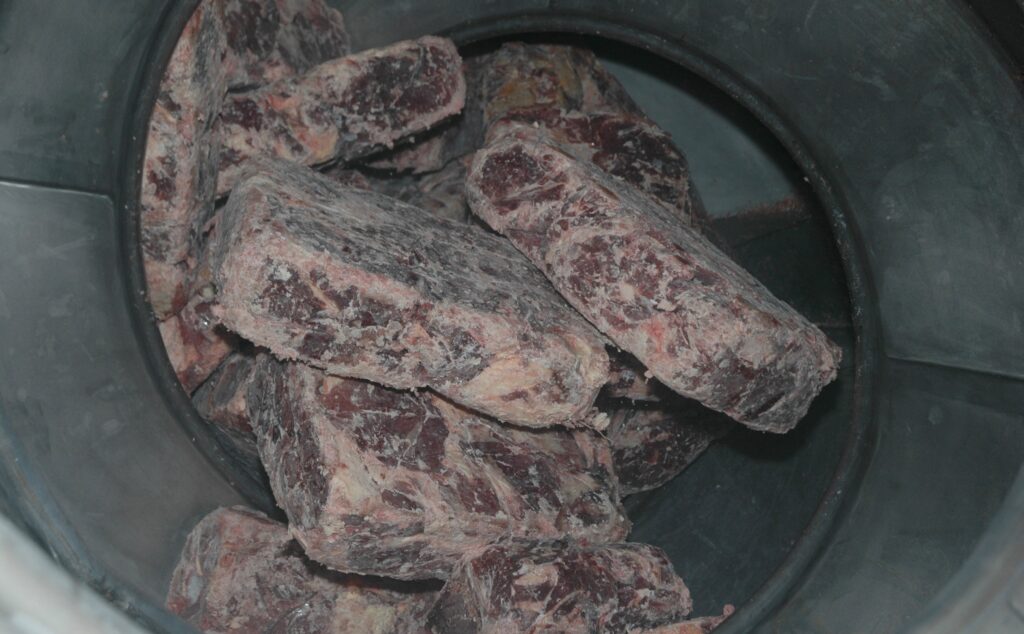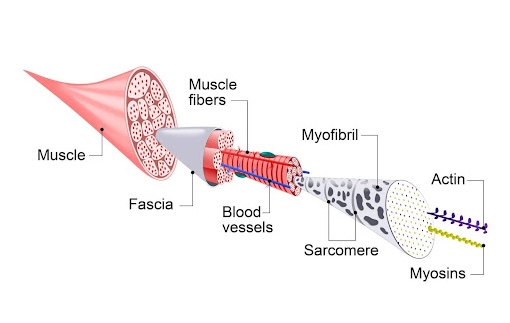
Whole-muscle meats create ooohs and aaahs at the dinner table. The beauty of a roast ready to carve. The irresistible smell of a smoked turkey breast. A spiral-cut ham prepared for serving. Whole muscles start with the eyes and nose and end with a smile and “mmmm-mmmm.”
But what makes whole-muscle meat good to eat? And how does a commercial meat processor ensure a desirable mouth feel along with infused flavor and tenderness? At Challenge RMF, our exclusive Meat-on-Meat Massage™ technology leaves the average commercial meat tumbler behind, delivering a whole new level of satisfaction for end consumers and profitability for meat processors.
Contact us for a demonstration of the technology or to talk more meat science for better products.
The Whole Muscle Network
A “whole muscle” cut of meat comes from the source carcass with the general muscle characteristics still intact. These cuts haven’t had extenders or binders added to make them seem cohesive, and they haven’t been reconstructed.
At Challenge RMF, we understand that the eating quality—the mouth-feel—of whole-muscle meats such as ham, roast beef, turkey, beef jerky, chicken breasts, etc., depends on the condition of their muscle structure.
Two key components of this structure include:
- Red Meat Protein. Predominantly made of myosin (a muscle tissue protein).
- Connective Tissues. Collagen-based sinews and membranes.
Think of this muscle network as a web of elastic sinew, connective tissue, and membranes that encase the red meat protein cells. Typically, these connective tissues and membranes become stronger, thicker, and tougher in muscles more heavily exercised by the animal.
For instance, a shank muscle with its dense, robust sinews contrasts sharply with a back muscle, such as a loin, which features a softer, thinner membrane structure. The structure of those fibers plays a crucial role in determining the mouth-feel and bite quality that consumers favor in premium cuts of meat.
Common Tenderizing Methods
Most commercial meat tumblers consist of a barrel rotating on a horizontal axis. Generally, they have long, straight flights inside the barrel that lift up the meat and drop it down as the barrel turns. This tumbling effect creates hydraulic shock intended to tenderize the meat tissues.
However, this hydraulic shock can damage the muscle network. Connective tissues loosen, and the muscle structure loses integrity. This can create an uneven mouth-feel, with some bites “mushy” and others more solid.

Our Meat-on-Meat Massage™ technology enhances tenderness across all types of muscles, making the connective tissue more palatable while maintaining the integrity of the muscle as a whole.
How Challenge RMF Makes Muscle Better
To preserve the consumer appeal of whole-muscle meats, your meat massager/marinater must tenderize the connective tissue web without compromising its texture.
The Challenge RMF Massager/Marinater provides exactly that. Through advanced engineering and over 45 years of proven excellence in the field, our unique meat massager/marinaters deliver uniform, dependable performance that’s both effective and reliable. In fact, the first Challenge-RMF prototype massager still does its job in a plant in Nebraska!
The Amazing Challenge RMF Drum
Our massager/marinater (not to be confused with a “meat tumbler” or “marinater tumbler”) uses helical flights, not straight flights, inside the drum.
These flights don’t lift and drop the meat. Instead, they produce gentle yet aggressive meat-on-meat massaging movements. With a Challenge RMF massager/marinater, you set the custom marination/massaging time, and our drum design protects your product’s integrity while delivering higher yields.
The high-performance stainless steel drum increases throughput without compromising the quality of your product, creating an ideal environment for whole-muscle tenderizing and marinating.
How Our Massaging Action Works
When you load meat into the Challenge RMF massager/marinater, the muscles rub against each other as the helical flights roll and move the meat along their curved courses. As the meat turns over, it alternately compresses and relaxes. In turns, the weight of the meat in the drum moves on top of each muscle, and then the drum rotates that muscle to the top of the load, relieving the pressure.
This constant rolling and massaging motion stretches and compresses the connective tissue fibers, reducing their elasticity without damaging the meat’s structure. A similar process occurs when you stretch and relax a rubber band until it loses its elasticity.
By the end of the massaging process, the connective tissue becomes delicate and tender. The overall integrity of the muscle remains intact, as the tissue matrix is not ruptured or shattered.
Though the load of meat can be extremely large—up to 22,000 lbs in our MM-10 Model—your product still won’t suffer the damage done by a traditional commercial meat tumbler.
Additional Non-Destructive Tenderization
Along with mechanical tenderization via our meat-on-meat massaging, time spent maturing or curing the meat also helps soften the connective tissue.
Wet-Curing
Historically, many processors believed that allowing whole muscle meats to rest in a curing solution would tenderize the connective tissue matrix.
Over time, meat producers enhanced the process by injecting pickling solutions containing salt and phosphates. In this wet curing method, meats like corned beef, pastrami, ham, or bacon would mature over days or even weeks, with temperatures carefully maintained below 40°F (4.4°C) to prevent premature pH drops.
The meat was often tightly packed into barrels or vats to prevent air exposure and oxidation. Under these conditions, whole-muscle meats like beef and pork would tenderize as the muscle cells absorbed the curing solution. The added moisture, combined with the softened tissue structure, produced exquisitely tender, cured meats with a delicate texture and mouth-feel.
History Meets the Future
With our Challenge RMF Vacuum Meat Massaging system, you can combine these traditional methods with our modern technology to accelerate the tenderization process while preserving key elements. Our unique massaging and marinating action—combined with internal vacuum and precise, efficient chilling—delivers effective marinating and tenderization as the product quickly reaches forming temperature.
As with all RMF equipment, our massagers and marinaters are custom engineered to ensure efficiency and reliability.
Additionally, the system’s Meat-on-Meat Massage™ technology promotes intracellular protein activation, enhancing the meat’s ability to bind water and creating superior bite quality and eating experience.
The Better Approach to Whole Muscles
We don’t offer a commercial meat tumbler. We offer better.
How? The fundamental difference lies in “massaging” versus “tumbling.” Think of massaging as rubbing your hands together to work lotion into your skin. You’re moving the muscle, working out knots, and adding moisture where it’s needed.
Tumbling, on the other hand, compares to hitting, slapping, and clapping your hands onto your skin. You’re bruising the tissue, damaging the muscle, and ripping ligaments.
The Effect on Mouth-Feel
Tumbling destroys the outer layers of meat fibers. As this happens, the meat cells burst and the escaping protein mixes with water, forming an oversaturated emulsion layer on the muscle surface.
This layer becomes almost impermeable, preventing further water from penetrating the muscle. As a result:
- The interior of the muscle remains dry.
- The exterior becomes oversaturated and wet.
- Weight is lost because even bonding can’t be achieved.
Meat Tumbling Hurts the Final Product
Take ham as an example. After processing in a commercial meat tumbler, the eventual cooked and sliced ham will show areas of dry, dark, and tough texture contrasted by lighter, softer, and mushy areas. This disparate experience of tough versus mushy degrades the mouth-feel and the satisfaction in the product. Inconsistently tenderized muscles also greatly affect slicing yield. Lastly, It can also cause a concentration of flavoring agents in the oversaturated meat, leaving the dryer and tougher meat with less flavor.
It Hurts Efficiency Too
Most competitors who use tumbling’s lift-and-drop hydraulic shock for tenderizing have to let the meat sit through “rest periods.” If a processor doesn’t let the muscle rest in brine, the commercial meat tumbler will tear these higher-end whole muscles apart. This introduces significant delays to the processing time.
Massaging Provides Even Results
Effective massaging ensures even penetration of the pickling solution throughout the entire muscle. Both the interior and exterior of the meat experience the same level of massage energy, which allows the pickle to migrate from fiber to fiber without damaging the cell walls or rupturing the intracellular membranes.
Your Challenge RMF massager/marinater can aggressively massage muscle tissue without tearing it apart, so there’s no need for resting the meat. This process preserves the integrity of the muscle structure for uniform slicing, less moisture loss, and more pleasant mouth-feel.
Get Big Muscle for Whole Muscles
Whether you’re processing poultry, red meat, or pork whole muscles, forget the commercial meat tumbler and choose the system designed to give you maximum choice and control: the Challenge RMF Massager/Marinater.
Contact us with your questions, or give us a call. You can also request a quote online to discover the full range of our solutions for your whole-muscle processing. We’ve got the science behind the engineering—and the results behind the quality—to show you why our Meat-on-Meat Massage™ technology is the best in the business, for your business.
About Challenge RMF
For over 45 years, we’ve supported the best of the best in food manufacturing and processing. Our long-standing client relationships speak to the quality of our products and the exceptional service Challenge RMF provides.
We’ve partnered with industrial food processors worldwide, and our team remains committed to being there when you want us and here when you need us. Let’s get started on your custom project today.

